
Monica Vitti, L’eclisse
Michelangelo Antonioni’s characters are always in crisis, but they are always dressed well, too. Furthermore, their easy access to luxury is a key part of their forced and vacuous lives, of their constant longing for a self that doesn’t exist. The costumes in Antonioni’s films speak in the most subtle way. It is a style that doesn’t scream out to everyone; it whispers only to those who know it’s all in the details. You have to pay attention. Because Antonioni himself had an obsessive attention to detail. And the clothes in Antonioni’s movies served an even bigger role, as they are not only a key element in the construction of cinematic identities, but also in achieving a new aesthetic composition.
L’Avventura (1960) was the first film from a trilogy which went on to include La notte (1961) and L’eclisse (1962). Visually speaking, it’s a hauntingly beautiful picture, thanks to Aldo Scavarda’s cinematography. Antonioni often turned away close readings of his films, encouraging an instinctive approach to viewing similar to that which he claimed he used while filming. But you can’t help noticing that not one frame is purposeless; each tells a part of the story. It’s groundbreaking, stark and pure, advancing the language of cinema. With no clear ending and an ongoing theme of reflection – aren’t the films that make us ask questions, and interrogate our own reactions rather than provide us with answers, the films that show the most precise artistic vision? – it looks fresh every time you watch it.
Yet, the experience is different, and Brad Stevens captured it very well in his essay in the Criterion booklet: “Watch these films several times, become acquainted with their language, and a curious phenomenon occurs: scenes we once found almost parodically emotionless are now unbearably moving; what struck us as lifeless seems filled with energy; what appeared sparse comes across as so plentiful.”
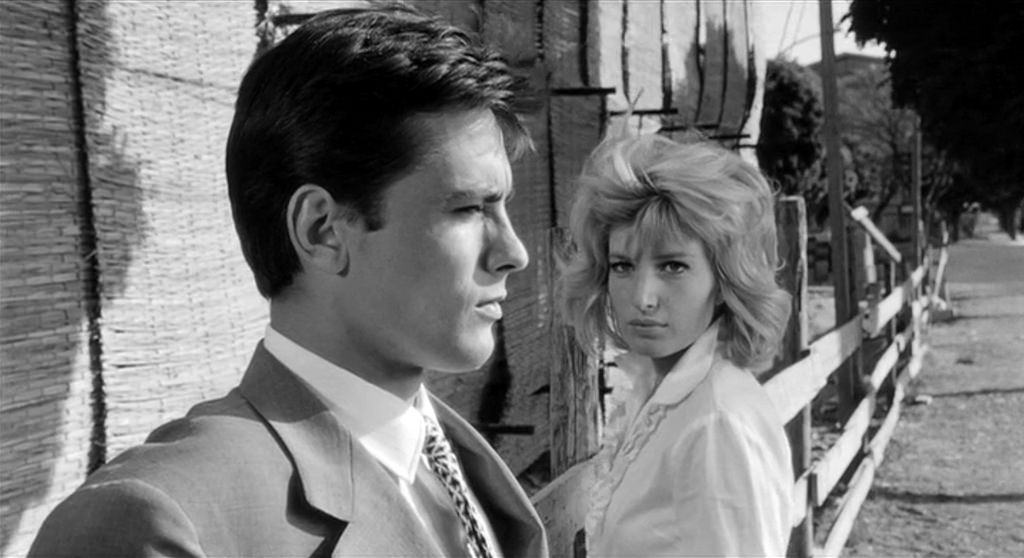
Monica Vitti and Alain Delon, L’eclisse

Monica Vitti and Marcello Mastroianni, La notte
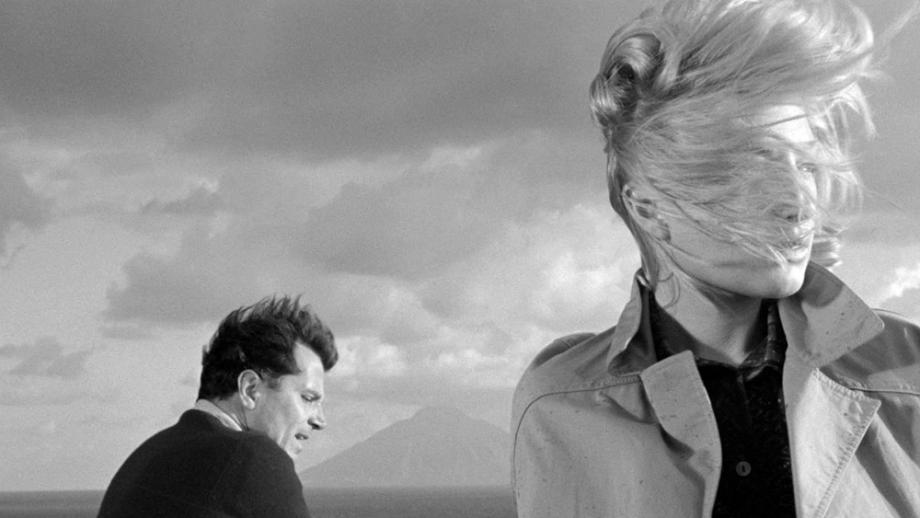
Monica Vitti and Gabriele Ferzetti, L’Avventura
According to author Eugenia Paulicelli, who dedicates an entire chapter in her book, Italian Style: Fashion & Film from the Early Cinema to the Digital Age, published last year, to Michelangelo Antonioni, “no Italian film director more than Antonioni has had such a knowledge of, and sensibility for, fashion.” Along with La dolce vita, L’Avventura introduced the world to a new Italian style and fashion after the post-war realism. Italian fashion, which had started to be acclaimed internationally, especially thanks to the cinema, became crucial in the economic reconstruction of the country.


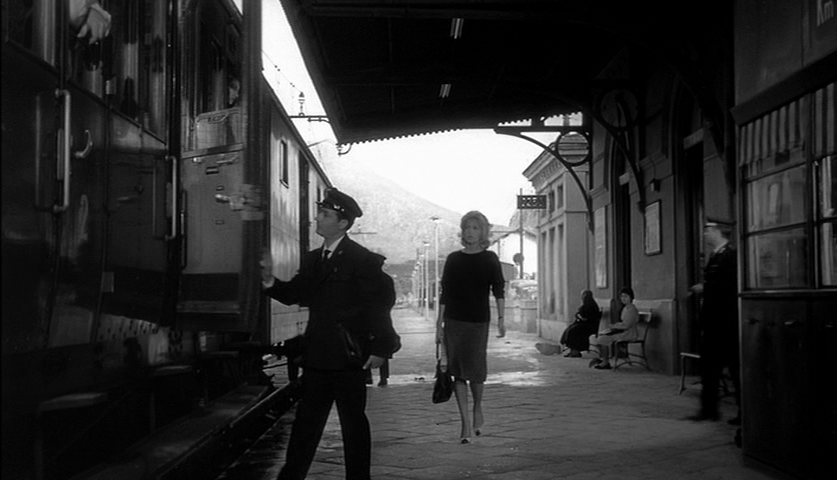

L’Avventura (1960)
The costumes in L’Avventura were designed by Adriana Berselli. They evoke a modern European feel, an Italian understated glamour, but, most of all, they blend in, chromatically and thematically, with the scenery as a key element to understanding the characters and the emptiness and futility of their lives. Monica Vitti is Claudia, who seems to be the only one who doesn’t exactly fit into her upper-class group of friends, but she mingles with them nonetheless – her costumes reflect exactly her problematic belonging to a certain social class.
When Monica Vitti, with her carina-bruta beauty, reserved sensuality, icy cool gaze and mysterious presence, saunters on screen, it’s difficult to take your eyes off of her. And this is true especially in the films of Michelangelo Antonioni, who captured her allure best. She would become Antonioni’s life partner and would appear in three more of his films – L’Eclisse, La notte and Il deserto rosso. Vitti carved her niche in comedy, being named by film critic Callisto Cosulich “the fifth musketeer” of Italian comedy, putting her next to Gassman, Manfredi, Sordi and Tognazzi. But she met international fame when she starred in L’Avventura. She gives a complex and vulnerable performance in the film and has a great chemistry with Gabriele Ferzetti.
Claudia’s blonde bob and the simple cottons and elegant cuts of her clothes display unrestraint elegance and timeless good taste. There is a polka dot suit she wears at some point, appearantly the only outfit not completely agreed on by the costume designer, who thought that the suit, chosen by Monica Vitti herself, conveyed a different and more bougeois perception of Claudia’s character. But, just because of that, I think this costume plays well for Claudia’s unresolved search for identity.
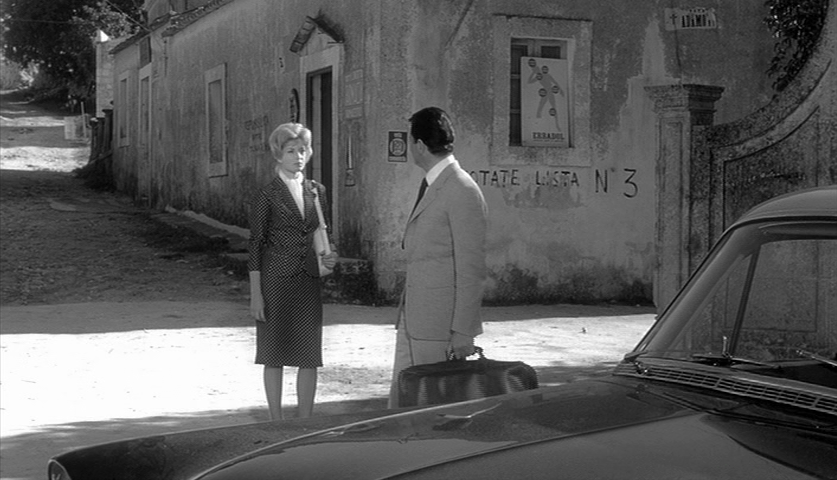

L’Avventura (1960)
Just as the shirt she is wearing after Anna’s disappearance does. The shirt belonged, in fact, to Anna (Lea Massari), who had put it in Claudia’s bag when she wasn’t looking. Claudia had tried it on when they were alone in the cabin. “It looks better on you,” said Anna. It was Antonioni himself who chose this particular shirt. It was originally a shirt dress purchased by the costume designer, as Eugenia Paulicelli writes in another book, The Fabric of Cultures: Fashion, Identity, and Globalization: Fashion, Identity, Globalization, and the director liked it because of the ethnic print of the fabric, with its brown and copper colour combination; he thought this would work well with the film’s colour scheme as a whole, but in particular for the sequence following Anna’s disappearance – dressed in it, Claudia seems to be one with the rocky landscape. It was then decided to cut the dress and transform it into a shirt. From the moment Claudia puts the shirt on, she becomes the new partner of Anna’s lover, Sandro (Gabriele Ferzetti).
But if you pay attention, since the very beginning of the film, Antonioni has signaled a certain connection between the two female characters: a shot of Claudia and Anna, one with the back, the other one one with the face to the viewer, another shot of Claudia on the boat, showing her swimsuit V-shaped back on the boat, followed by a shot of Anna’s summerdress V-shaped back. They could have easily switched places any time.
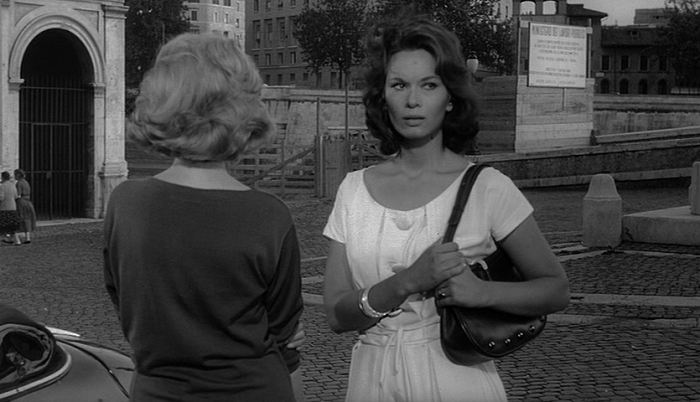
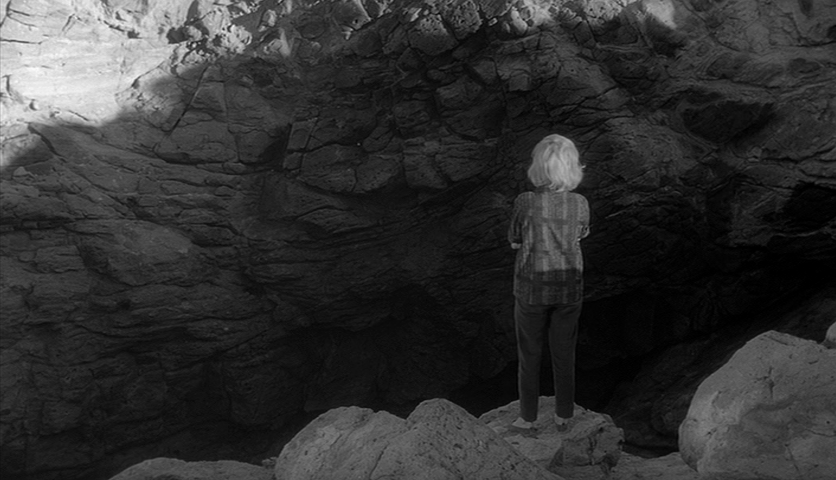
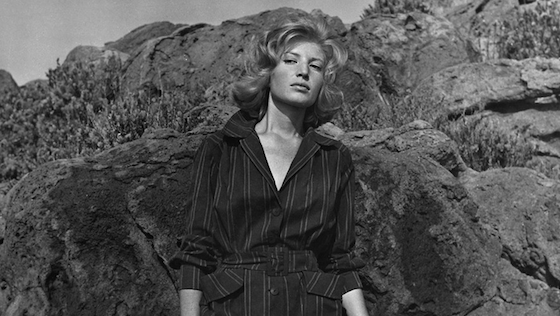
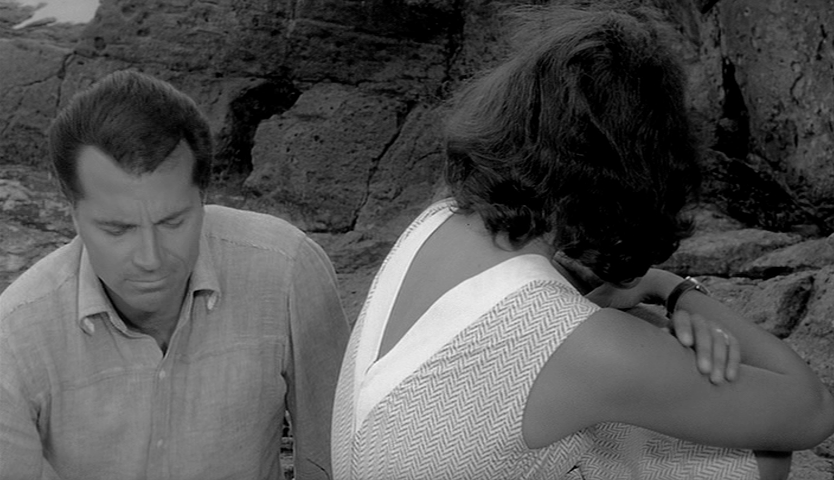
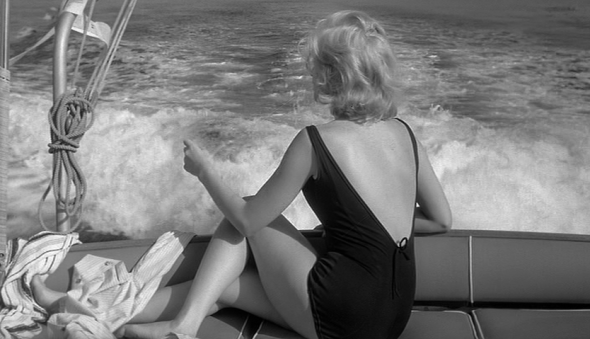
L’Avventura (1960)
In La notte (1961), as in L’Avventura, there is an intimate moment, a conversation, between Lidia (Jeanne Moreau) and Valentina Gherardini (Monica Vitti – in this film she is a brunette, wearing a wig, again reminiscent of an episode in L’Avventura in which she tries on different kinds of wigs) during the all-night party at Valentina’s parents’ villa. A sudden rainstorm has drenched many party-goers, including Lidia, who leaves for a car ride with a guest who has been flirting with her. Her husband, Giovanni (Marcello Mastroianni), has, in turn, been flirting with Valentina. When Lidia comes back from her ride, with her clothes completely soaked, Valentina takes her to her room and gives her towels to dry herself. In this scene, the two women, who should be rivals, appear to be accomplices. Their dresses, both black (Vitti’s was Valentino), are very similar in style, following the line of the body, cut right under the knee, and showing a bare back. “I’m not even jealous at you,” Lidia tells Valentina.
This article comes soon after the sad news about Jeanne Moreau. What is there to say when one of the greats leaves us? I usually encourage my readers to just watch their movies. That’s where Moreau’s magic lies: in her films, the extraordinary legacy that she left us. Her range was extraordinary. She brought to the screen a singular, inimitable passion, an impatience, moodiness and freedom tout court, an unquenched curiosity, an impertrubable look, a glamour that was not showy, an innate elegance that was not noticeable, and a shameless gaze. Jeanne Moreau seemed to bring her own concerns and ideas to her screen persona. Orson Welles said she was the greatest actress in the world. I believe she was.
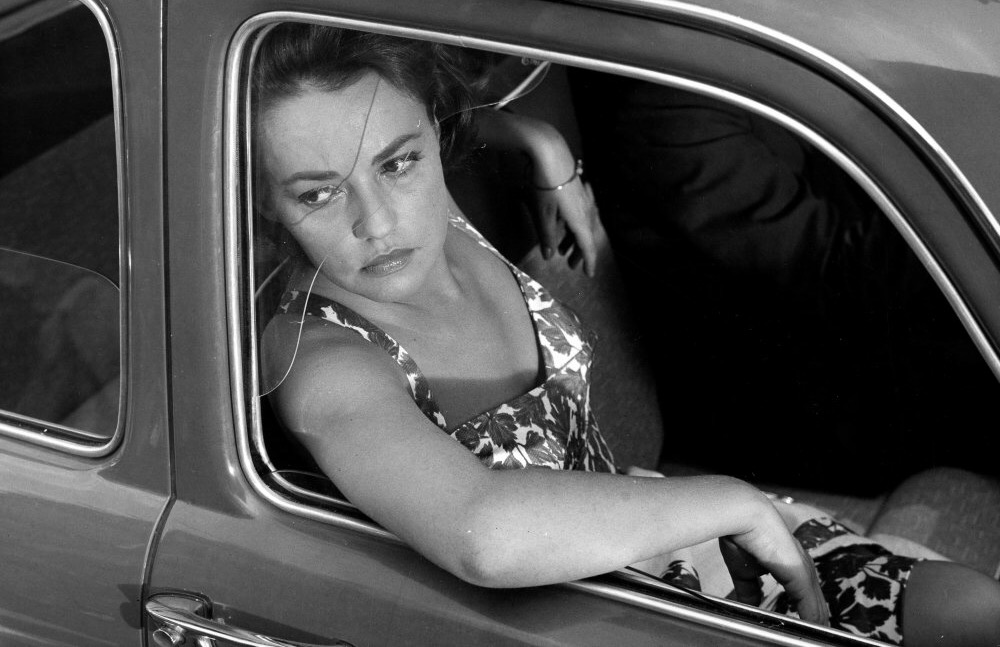
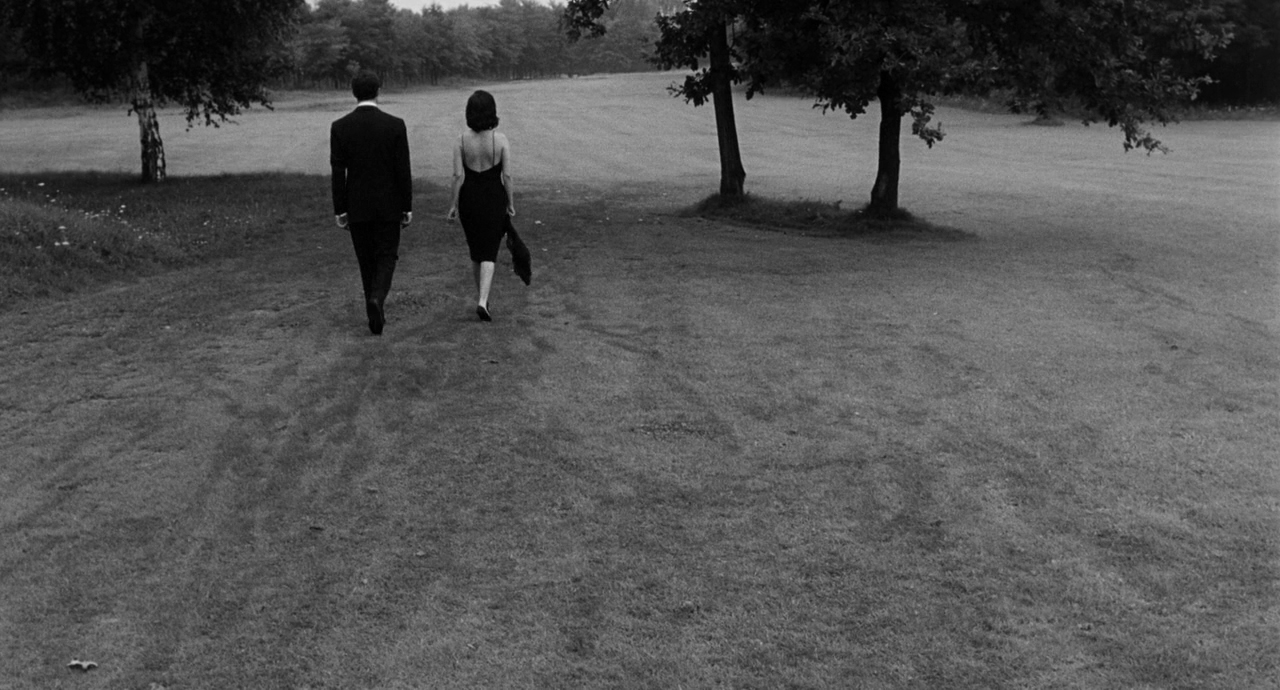
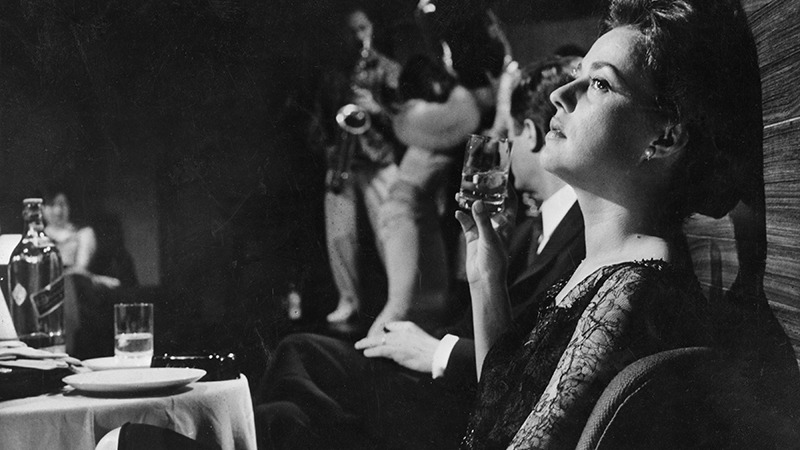
Jeanne Moreau and Marcello Mastroianni, La notte
There is no other actress who could embody best the lure and failure of intellect in Antonioni’s film than Jeanne Moreau. “Are you still hanging around intellectuals?”, one of the party guests asks Lidia. Moreau gives one of her most memorable performances in La notte. She wanders through the Milanese suburbs where she and her husband had known newlywed bliss. Later, she flirts half-heartedly with a party guest, before succumbing to Mastroianni’s advances on the golf course at dawn. Moreau is cultured, sophisticated, complex and vulnerable, and she is perfectly painfully aware of the entrapping emptiness of her existence.
La notte charters the gradual deterioration of the relationship between Lidia and Giovanni, on the background of a cold and modern urban landscape. The film illustrates so well how habit can preside over truth, and how our choices and the way we are perceived by others often shape us and influence us more than our own values. Unlike Lidia, who goes through a whole range of emotions, more poignantly expressed with her face than in words, Monica Vitti’s Valentina remains impenetrable and artificial (her game with the compact is less inventive than pointless), despite her mysterious smile. She is selfish and introverted. Just like Vitti, Mastroianni is the perfect ‘mannequin’ type of actor in La notte, his impeccable suit and stony face providing so well a measure of detachment – he had proved it so well in Federico Fellini’s La dolce vita.
Jeanne Moreau wears only two dresses throughout Antonioni’s movie, both created by the Milan-based designer Biki. The first one is an elegant sundress with floral motifs and back cleavage, which she wears with Chanel sandals and a clutch. The second dress is black and she wears it to the Gherardini party. When she puts on the black dress, she looks pleased with herself, all the more so when her husband notices it’s a new dress. But Giovanni’s interest in his wife stops right there, at this remark, to Lidia’s disappointment. She asks if they can skip the party and go elsewhere.
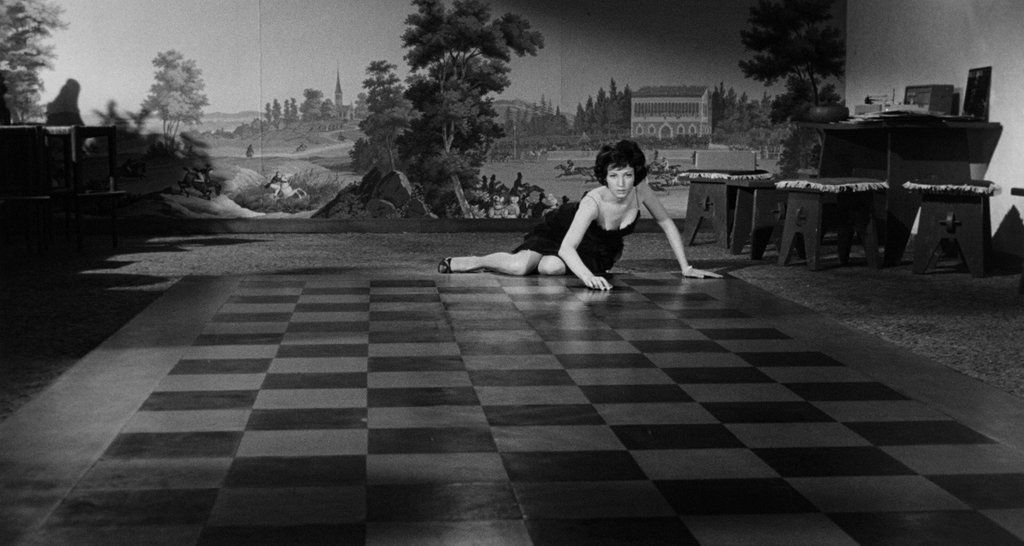
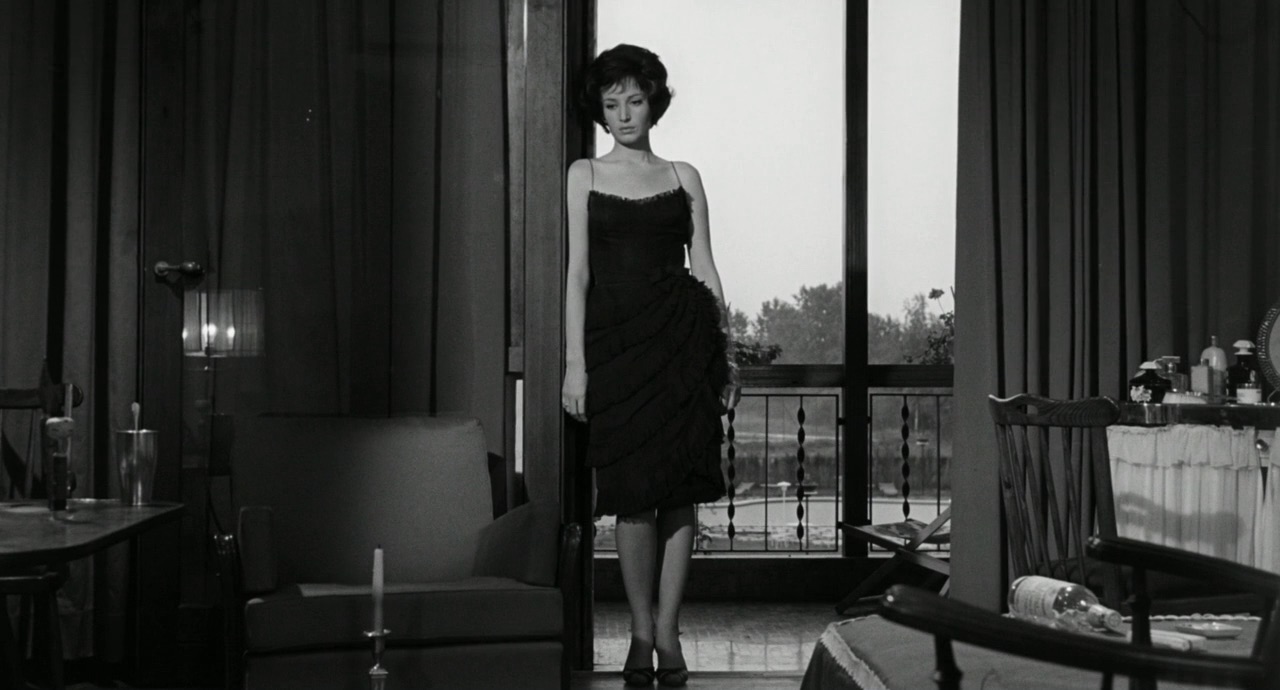
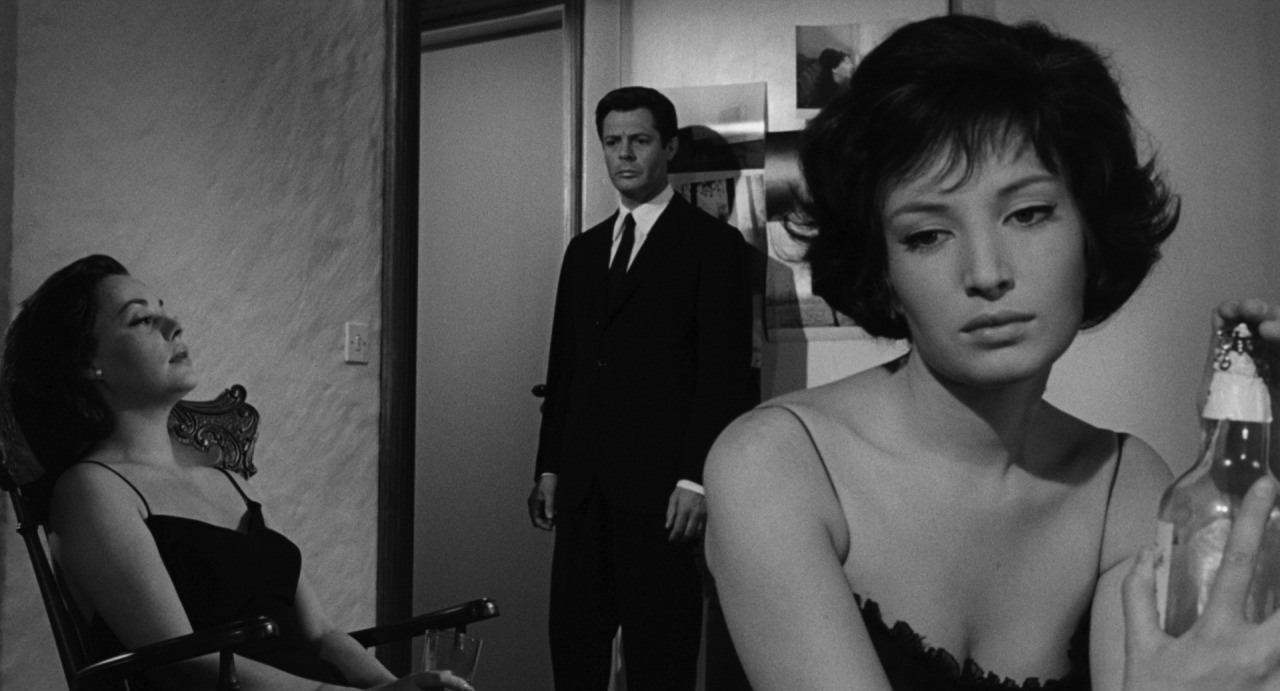
Monica Vitti, La notte
Monica Vitti was perhaps never more sensual than in the role of Vittoria in L’eclisse (1962), a young literary translator who embarks on a doomed affair with Piero (Alain Delon), a stockbroker, after she has just ended another affair. In the opening sequence, Antonioni shows Vittoria from behind, allowing us to see only her legs and kitten heels. Women in Antonioni’s films are often shown from behind, observing the landscape, wandering in the street, looking out of a window, standing in doorways.
Vitti wears simple dresses throughout the film. Her style is simple and elegant. Bice Brichetto, assisted by Gitt Magrini, who would later work as costume designer for Bertolucci’s Il conformista and later Last Tango in Paris, was responsible for the clothes in L’eclisse.
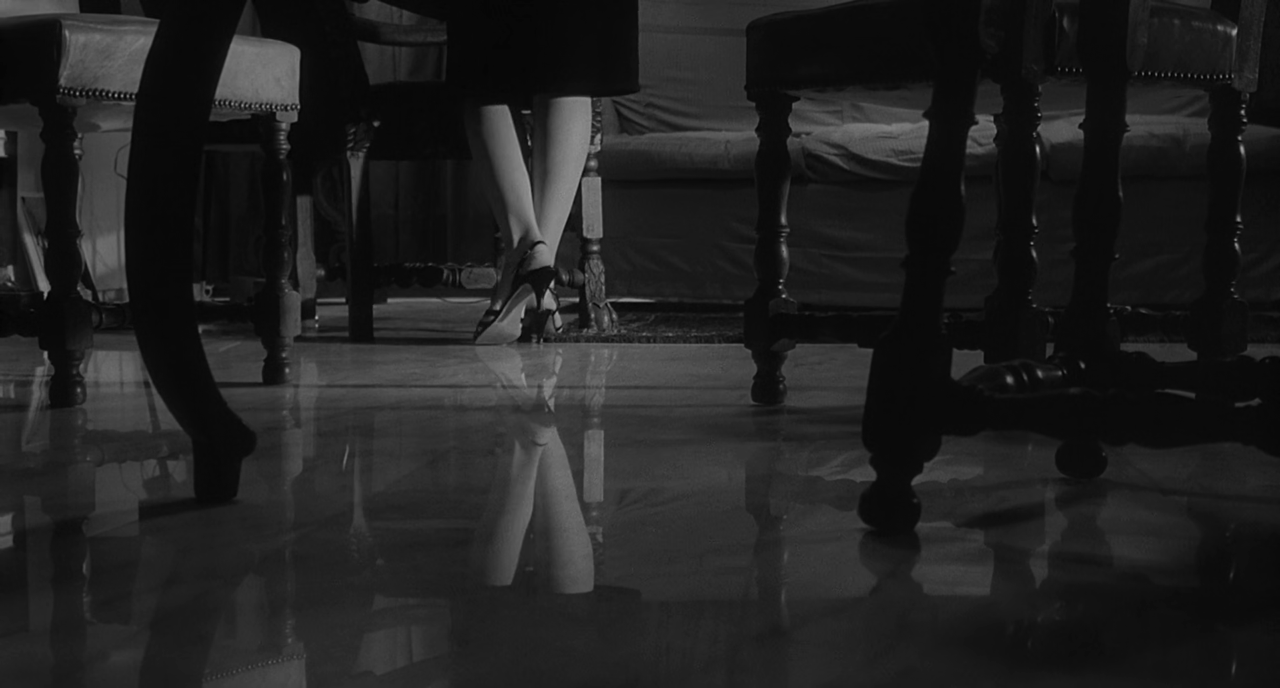
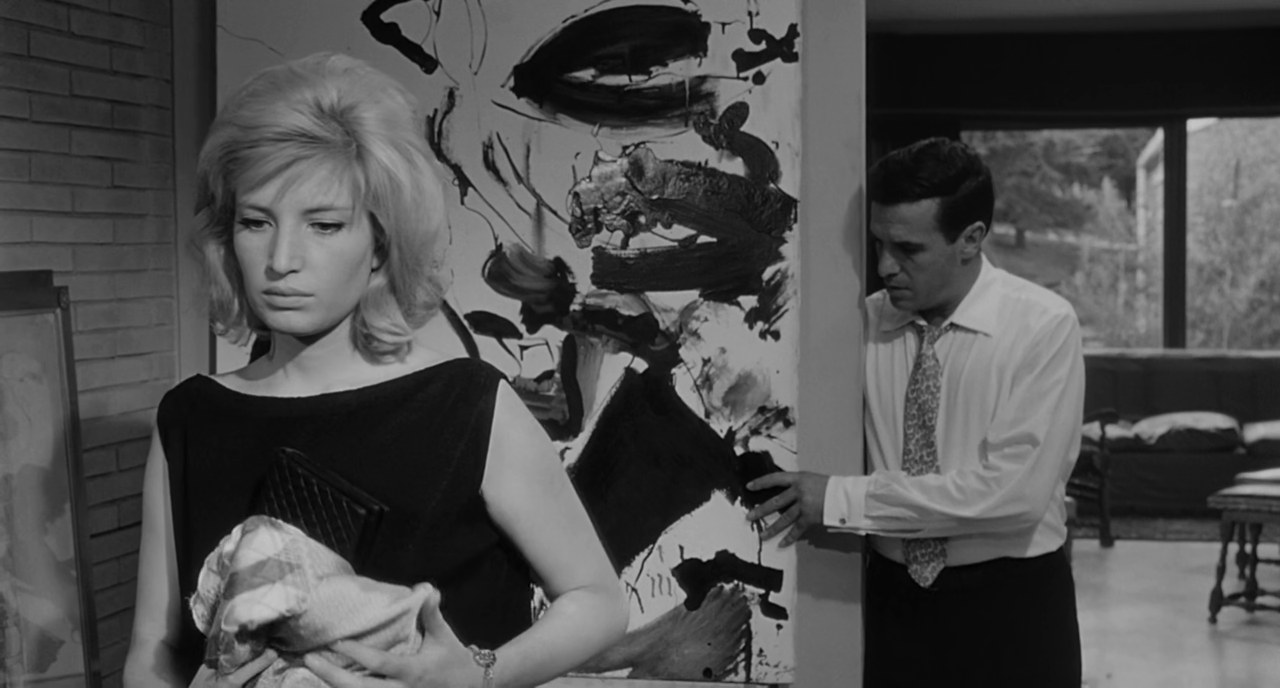

L’eclisse (1962)
The empty spaces, the zebra crossing, the periphery, the on-going building constructions are all reminders of Italy’s process of modernisation. But the most striking visual motif in the film, found from the design of the opening credits to the street near Vittoria’s apartment and other places and spaces, including one of the paintings of Vittoria’s ex-lover, is the motif of white lines. That motif becomes even more striking when pared with Vittoria’s white outfits. It’s as if she draws the line between her and her lover, the line where life changes, knowing it can not return to its previous state.
Antonioni truly was an architect of vision. He practically invented a visual vocabulary for the spaces between people. He carefully chose his locations for their sterile desolation. The conclusion of L’eclisse (1962), for example, through the succession of shots of the empty streets and buildings, barren lots, street lights, a passing bus, people staring, a rustic fence where the couple once stood, marks the death of the two characters’ relationship. These spaces were the setting of their courtship, now void of the two lovers. They have simply suddenly disappeared, leaving us with the barren locations, waiting for something to happen. Nothing does. It is one of the most astounding conclusions in cinema.


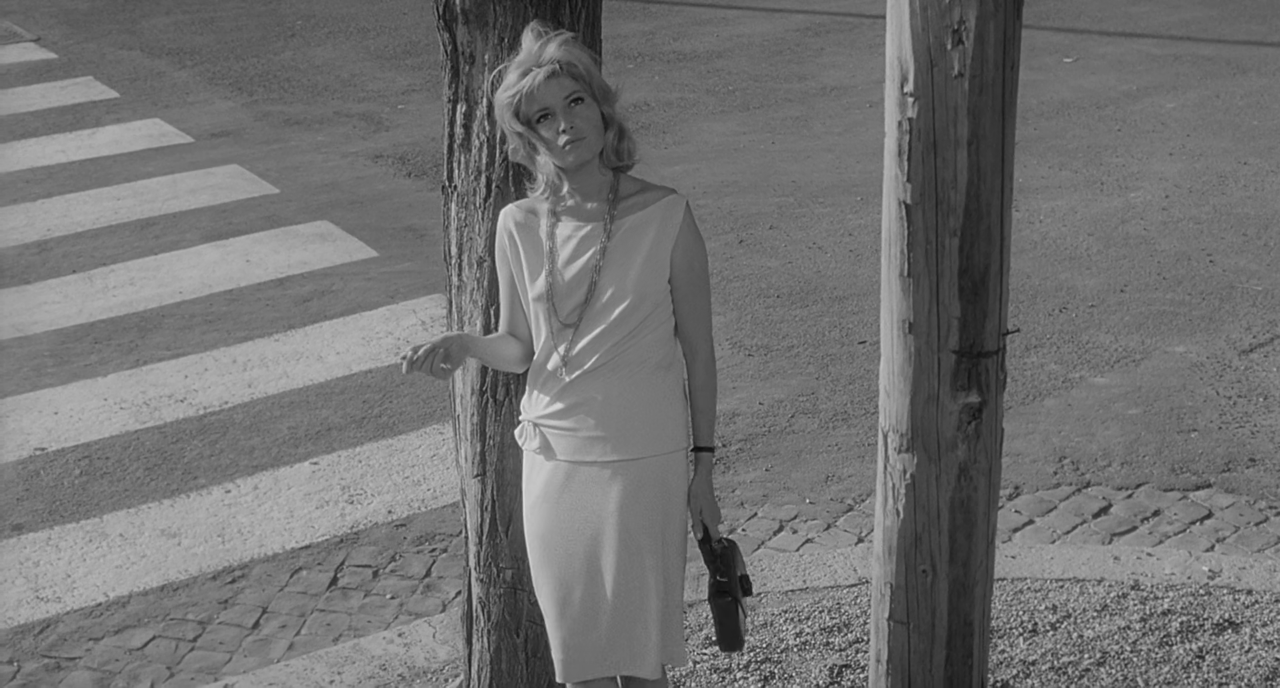
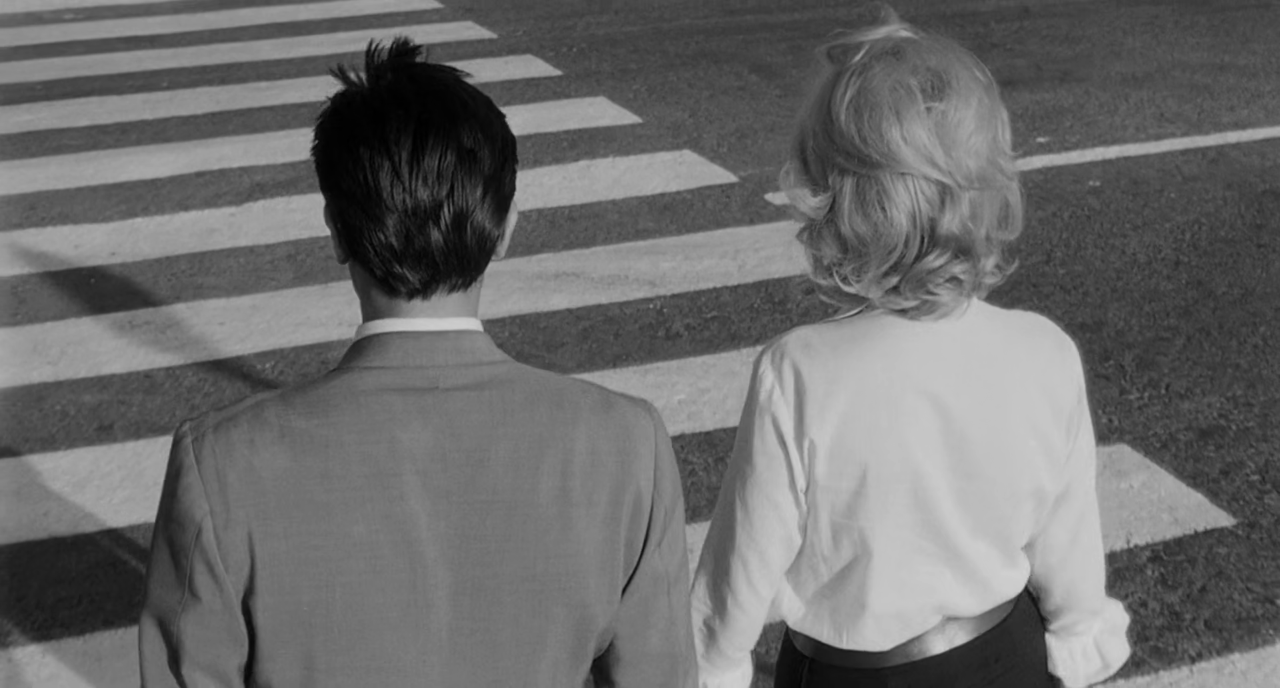
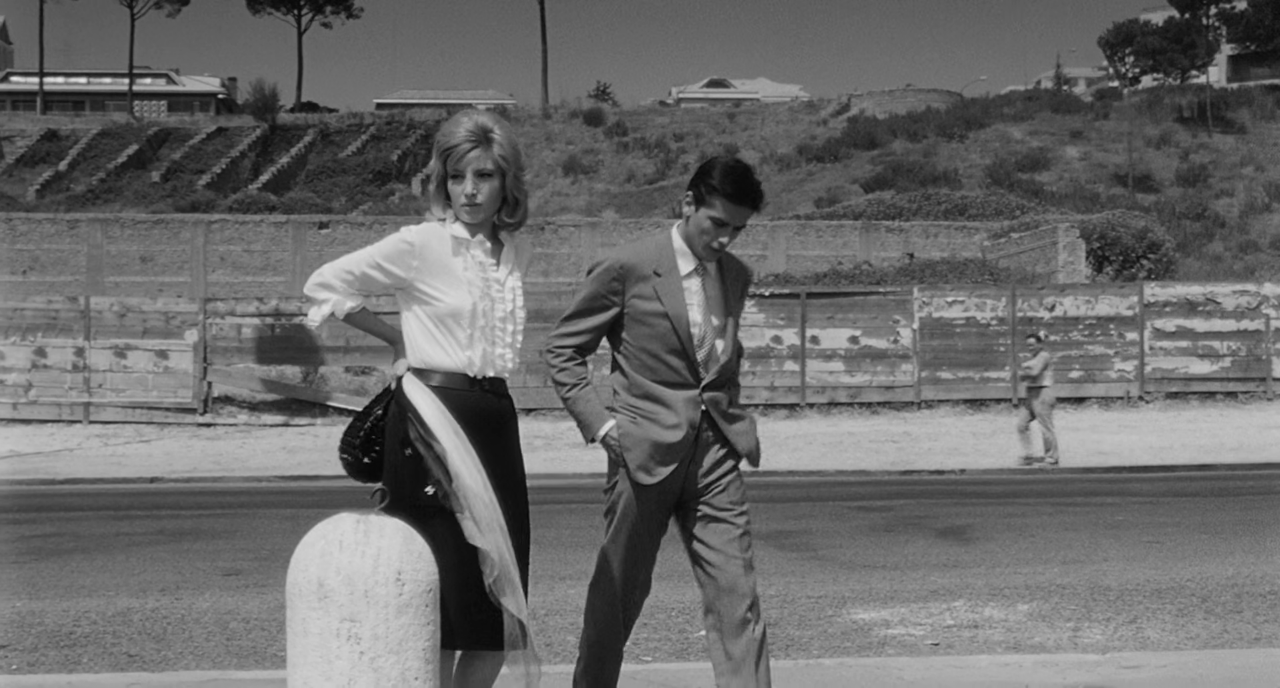
L’eclisse (1962)
photos: film stills | L’Avventura (Cino del Duca, Produzioni Cinematografiche Europee,Societé Cinématographique Lyre) | La Notte (Nepi Film, Sofitedip, Silver Films) | L’Eclisse (Cineriz, Interopa Film, Paris Film)
This content is published courtesy of classiq.me
One reply on “Fashion & Film: Fashion in Michaelangelo Antonioni’s Films”
Antonioni Master forever .